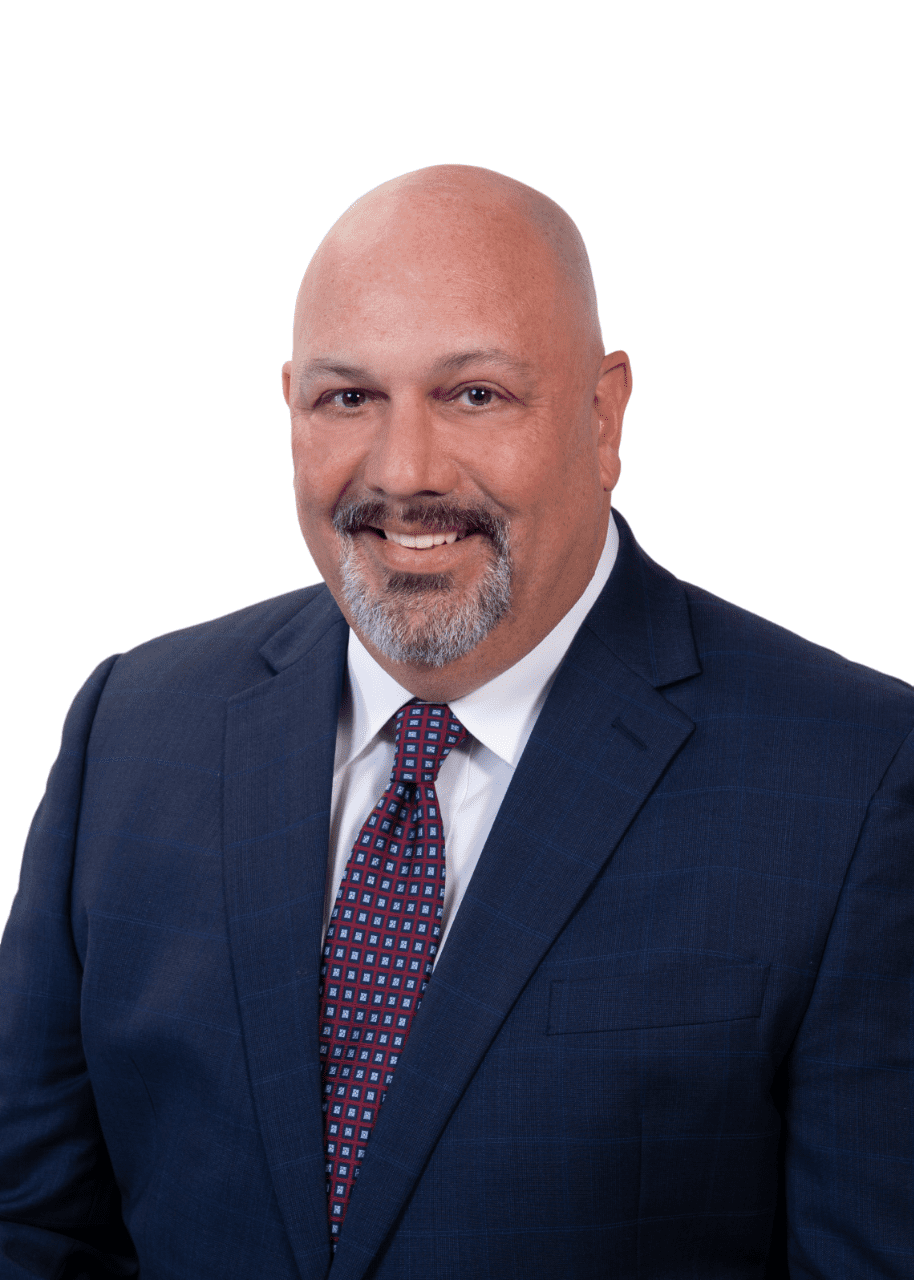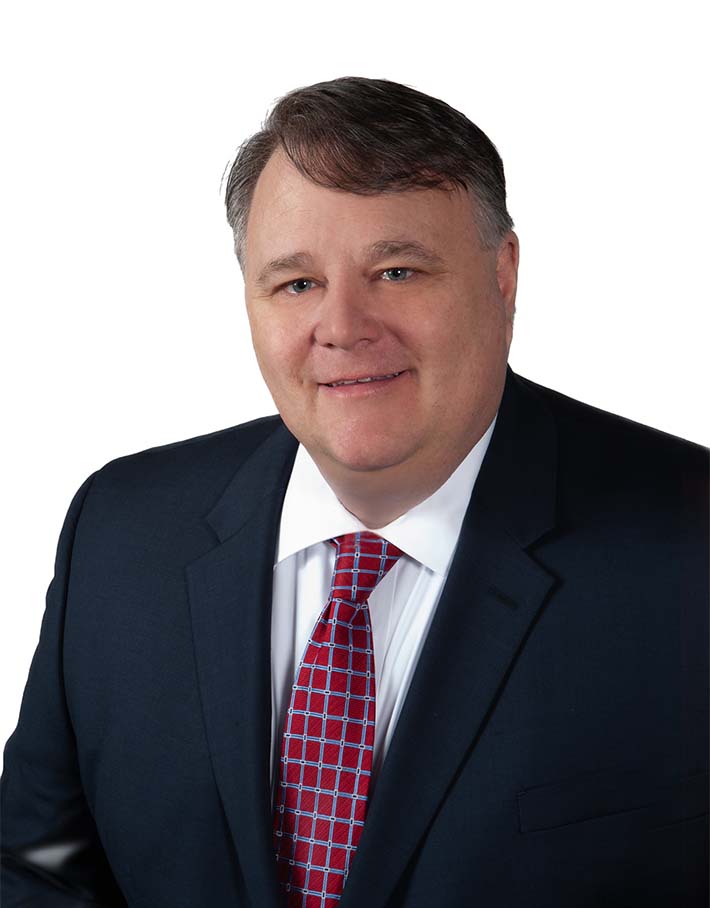Platform Ownership: Weighing the Strategic Choices
In-House Platforms vs. Outsourcing for Wealth Management Firms
Subscribe to our original industry insights
While there are fundamental differences between Registered Investment Advisors (RIAs) and broker-dealers, determining whether to develop and maintain in-house operational and technology platforms or outsource them is a critical, strategic choice.
In this episode of the Oyster Podcast, industry experts Dan Garrett and Jay Donlin explore the nature of modern operations management for RIAs and broker-dealers. The strategic decision whether to manage their own operating platform or outsource it can significantly impact a firm’s business operations, client experience, and competitive advantage.
Key Considerations for Managing Your Own Platform
Oyster’s experts highlight the primary factors that firms need to weigh when deciding to develop and manage their own operating platform:
- Cost and Budget: Understanding the financial implications of building and maintaining an in-house platform vs the option to buy software or otherwise outsource operational functions.
- Out-of-the-Box Vendors vs. Customized Builds: Our experts also compare the advantages and disadvantages of using pre-built vendor solutions versus custom-built platforms.
- Resource Allocation: Assessing the availability and capability of internal resources to handle platform development and management. When a firm maintains multiple broker-dealer or RIA wealth management tools, integration, scalability and compliance must be managed by an operations team, or specialist.
- Integration: Evaluating how well the in-house platform integrates with existing or new systems and workflows.
- Client Experience: Considering how the platform will impact the user experience for clients and advisors. Will the firm’s client facing wealth management tools provide the information customers want, when they want it and in the way that they want it?
Common Pitfalls in Platform Ownership
Our experts also discuss frequent challenges that firms encounter when managing their own platforms, including underestimating complexity, scalability issues, maintenance and upgrades.
Comprehensive Solutions for Platform Management
Oyster Consulting is more than just an advisor; we are a partner committed to your success. Our consultants are experienced experts who can help you make platform decisions and achieve faster, better results.
Oyster Consulting provides a thorough analysis and strategic approach to selecting and integrating ria software solutions and platforms. We aid in selecting the appropriate platform and system integrations that enhance customer and staff contentment, boost productivity, and distinguish you in the marketplace. Our experts will help your firm choose, evaluate, and negotiate with ria platform providers, ensuring a smooth and efficient process. With extensive experience in platform integrations, we ensure successful conversions that align with your firm’s goals. We make sure your firm and technology vendors are strategically aligned to provide optimal value and results.
Transcript
Transcript provided by TEMI
Bob Mooney: Welcome to the Oyster Stew Podcast. I’m Bob Mooney, General Counsel for Oyster Consulting. Whether you are a startup or an established wealth management firm, determining whether you want to manage your own operating platform or outsource it is an important strategic decision. There are many factors to consider, from cost and available resources to integration and client experience. In today’s podcast, Oyster experts Dan Garrett and Jay Donlin share their expertise on what goes into establishing and managing your own platform, common pitfalls, and using out-of-the-box vendors versus customized builds. Let’s get started.
Dan Garrett: Alright, thank you, Bob. This is Dan Garrett. I’ve got 30 years of experience in RIA-BD and clearing businesses, running operations and technology groups. I’m joined here with Jay Donlin. Jay, if you could share a little bit about your experience, and then we’re going to get into the topic of cost decisions and owning your own platform.
Jay Donlin: Yeah, thanks, Dan. I also have over 30 years, very similar paths to you. I’ve been Chief Operating Officer of introducing firms. I’ve been Managing Director of clearing firms. I’ve been on both sides of the table on negotiations with clearing and custodians and been with Oyster a little bit over five years. And so, we’ve been helping firms kind of navigate the complexity of various pieces of the business, of the financial services business. So I’m looking forward to this conversation.
Dan Garrett: Yeah. Great. Thanks, Jay. We’ll definitely get into some of your experience working with some of our clients in the past and some advantages that we’ve provided them and their journey along these lines of breakaways and going independent and looking at opportunities. We think of a lot of firms, a lot of folks going independent, and breaking away so that they have a lot more control over their business, maybe higher payouts. But with that comes a lot of decisions to be made around the platform and the ownership structure that you’re going to get into. And I think what we’ll do is cover a little bit about technology clearing relationships, and then probably get into actual products. But let’s start off with technology. I think that’s what a lot of people think of when they think about platforms and platform ownership, and one of the reasons why a lot of people like the flexibility. But with that comes some cost. You want to give some thought about that, Jay?
Jay Donlin: Yeah, Dan everybody, not everybody, but a lot of people say, “I’m trying to get my own technology stack. I feel like I can build a better technology stack in order to meet the needs of my clients.” And there are hundreds and hundreds now of FinTech vendors. There’s new ones popping up every day. I think you and I are on different calls with FinTech vendors weekly. They’re new vendors reaching out to Oyster to try and show us their wares. And so, it becomes a very complex decision and the cost associated with it. Some of them are very expensive either in implementation or the ongoing costs. You have to do the math and you have to figure out is this the one I need? Is this a service I want to be able to provide to my clients?
There’s a lot of FinTech vendors that are a lot of the same ones, doing the same services. And, we had a colleague that chatted with me during one of the conversations we were having recently. He said, “so how is this different than the other guy, the other vendor that we just talked to?” And I said, “Not really. It’s just the same thing, different package.”
So it’s like, okay, how do I make that decision? How do I nail the cost down? Because when you’re looking at implementing a tech stack, you know, you have to determine if you have the ability to build, which most firms don’t. They don’t have the ability, either the technology prowess and/or the budget, to build, and so you have to buy. It’s a lot of due diligence for each of these vendors that you have to go through. And cost is a major factor, and it can be a big hurdle to get over in trying to own and build your own stack.
Dan Garrett: Let’s talk a little bit about the vendors because both of us have been in the industry for 30 years. We’ve seen complete reversals and turnovers in technology in different firms. So, firms that had 80% of the market share with their technology were replaced by FinTech startups and in five, 10 years; they’re now at 80% and the other ones forgotten about. And so we see change occurring and new vendors coming into the space.
But let’s talk about the difference between a very large established vendor and a startup and why you might want to pick one over the other. Some of the challenges we had mentioned, just looking at CRM solutions, there are very point or niche solutions out there for wealth management. There are some very, very large CRM solutions that provide CRM to a lot of different industry groups. They also work with partners that will essentially focus the tool on wealth management. But can you share some of your thoughts around going with a large player versus a small player and the cost and opportunities, advantages and disadvantages of those?
Jay Donlin:
Yeah, so what’s interesting is that in my career I’ve seen numerous CRM fails. They spend a lot of money and nobody uses it, and it’s because it’s not functional. The data that was input there was not clean. So there was a lot of reconciliation, and the advisors basically throw their hands up and say, “I’m not going to use it.” Millions and millions of dollars have been invested in CRM systems in order to do that. But to your point, there are some large vendors that basically do CRM across multiple industries. There are some that are smaller. I don’t know if I would call them smaller now, but they’re smaller than those large ones that are very specific and they’ve built it for the financial services industry. And so, it’s almost out-of-the-box.
You can just manage your business. You don’t have a lot of customizations. The larger vendors that have a broad-based platform that can span multiple industries, it takes a lot of customization to get it the way you want it. I mean, we use one here at Oyster and it just takes a lot of customization to get it to do what you want it to do. Those are the things you have to weigh. Can I get one out-of-the-box and not have to do a lot of customization? Because with customization comes cost, and there’s a lot of these overlay vendors that have these overlay modules that sit on top of these large ones that try to make it more specific to the industry you’re in. So, there’s this secondary market of consultants that you have to hire. Even though you bought software, you have to hire a consultant to make your software work. And so all that is just added cost, layer upon layer of costs, a lot of mouths to feed. You really need to delve into, “can I get something out-of-the-box that can meet my needs?” Because that’s usually the most cost effective system or cost effective option.
Dan Garrett: Yeah, one of the things that we talked about was “trust but verify.” I’ve bought a lot of technology over the years and worked with lots of sales folks, and a lot of times there’s a lot of promises that yeah, we can do that. And, not that it can’t, but the software needs a lot of work to get it there. It needs either, like you said, hiring a consultant, or paying them additional money for enhancements and so forth. You need to find the balance between the customization that you need for your firm or that you think you need for your firm versus the cost of getting a product there versus just buying a product that’s almost there, gets you most of the way there, but it’s out-of-the-box. You don’t need to do anything.
And so, those are certainly a balancing act. We recently put out a blog about vendor management, and I think that really starts during the sales process – to ask the right questions, but more importantly, to get referrals and talk to folks that are using that software. Find out from your peers in the industry about the software. Don’t just listen to the salesman and the vendors, but really talk to people that are using it in the field. Ask them questions that are pertinent to your business and how you’re going to use that application to ensure that there’s no surprises once you get down that road. So before we leave technology, are there other, besides CRM, things that we want to cover?
Jay Donlin: Yeah, the one thing I want to kind of jump in on is one of the things on the due diligence side. We talk about it and joke about it internally at Oyster. Sometimes we’re like, “Hey, are these guys working out of a garage, this FinTech vendor, or are they legit?” Do they have more than just two people? What happens if one of them gets hit by a bus? All that sort of stuff. That’s all important, because you want to make sure that the vendor is there to stay. And we know a lot of vendors, we’ve dealt with a lot of vendors over the years. The ones that just pop up out nowhere, you just need to be suspect of like their wherewithal and do the proper due diligence on that.
On the technology side, the most important thing is integration. What other pieces do you want to integrate with? Do you want to integrate with financial planning software? Do you want to integrate with a portfolio management software? Of course, your clearing firm or your custodian has their own system that you need to integrate with, likely. So all these need to talk in harmony. Those are the kind of systems that people are looking at: portfolio management systems, the CRMs, imaging, document retrieval, that sort of thing. Those are all different pieces of the stack that people consider when they’re building out their platform and how they can service their clients the best.
Dan Garrett: Yeah, that’s a really good point. I think that people don’t think about it because they go out and they buy all these different systems that are the best at what they believe that they need, but then nothing talks to one another. And that’s a problem in itself. So, if you’re doing planning, you’ve got CRM, you’ve got planning, you’ve got your portfolio management, performance reporting, you’re onboarding. All of these systems need to talk to one another. And it’s important to know when you’re selecting a vendor that those vendors are integrated.
It’s gotten much better. When I think back 20 years ago where those kinds of integrations needed to be one off, and the two companies need to work together. Most companies now have API and API libraries that you can connect. But even there, if you don’t have software developers in-house, you’re going to need to hire one, or a consulting firm, to use those APIs to connect with two different vendors that have those out there, but maybe not a direct connection to one another.
So that game has changed a little bit over the years. It’s gotten better in some ways, but in some ways you still need to have the technical resources and wherewithal to make those connections. So that’s a really important point as you’re looking at vendors to make sure that they are connected. And that leads into the next subject here, Jay, is to really talk about the clearing firm and your broker dealer, your RIA that you’re going to be working with, and the technology that they have, and how you want to use those. So a nice segue into that.
Let’s talk about that in terms of your platform selection and the cost and opportunities there.
Jay Donlin: Yeah, one of the things that you mentioned Dan, it used to be kind of hard to integrate with anybody, and you had to have major technology resources in place with a lot of experience to get it done. But the major custodians and the clearing firms have hundreds of integrations with all these vendors now. So, it’s a lot easier to get “connected,” but you still have the challenge of getting everything to talk to each other. We’ve had clients that invest in three or four different packages – a portfolio management system, a CRM, a risk analyzer, that sort of thing, a financial planning tool. It’s great because they can connect to the custodian; but then they don’t connect to each other, and so you have to go a circular reference to get to any particular one. So, when you’re in your financial planning software, you can’t see the notes in your CRM and that sort of thing, and you’re having to spawn two different browsers and it just leads to inefficiencies. So, that’s the challenge when it comes to the integration piece on that.
But the custodians, major custodians, and the major clearing firms have all the major vendors pretty much integrated. So it is worth talking to your clearing firm or your custodian as well to see who they recommend. Although we’ve had a client that went to their clearing firm and asked, “who should I use for X, Y, Z?”, and the clearing firm said, use this vendor here. And it’s been a disaster. It’s not always the best to do that. They kind of took that and ran with it instead of doing a lot of due diligence on what integration meant, whether it was bi-directional or one way. And that’s kind of been the issue with that vendor choice. We got a lot of experience in seeing challenges that have to get unwound when it comes to technology.
Dan Garrett: We do offer services in that area. When clients come to us asking for help and selecting a custodian, can you talk about some of the decisions or some of the things that they need to look at? Not just cost obviously, but what types of things would you help them in the discovery process around?
Jay Donlin: We typically go to them, and we document business requirements, needs, wishes, that sort of thing – what they would need to basically have their business function the way they want it to function and be able to service their clients the way they want to be able to service, whether it be technology, whether it be product capabilities, that sort of thing. What do they need from their custodian or clearing firm? We walk you through a tech decisioning process to ferret all that out. And then, because of all the different firms we work with on the custodian and clearing side, we can help you narrow it down to the ones you really should talk to. Then we go through those conversations with you and let the firms pitch, the custodian or clearing firm, and help you with that decisioning process on how to select the best clearing firm or custodian or combination thereof.
You may decide you need to have a different RIA, a custodian versus a clearing firm if you’re a broker dealer. You may not be a broker dealer. You may be a breakaway from one of the large wire houses and you’re looking for a broker dealer, an RIA combination. There are these providers out there that will serve as your broker dealer and RIA, so you don’t have to create your own wheel. They also have technology packages that are canned or prebuilt. So, there’s a lot of those that have popped up in the marketplace to be able to get you off on a strong footing, versus building it all from scratch, if you’re taking a leap.
Dan Garrett: I know we provide help in these areas, both at clearing evaluation and technology in providing fractional CTO work, helping with RFIs and looking for vendors, but also building technology for firms. For firms that are considering moving and transition, what are some of the key takeaways there in terms of platform ownership and cost that we think some of the clients might need to be aware of?
Jay Donlin: Especially on the technology side, you need to be aware of, “Do I have the capability or the depth of knowledge in order to go down that path with technology and even manage my own technology stack? Do I have those staffing resources in place in my organization, or can I outsource that? Can I find somebody that can act in that capacity and can help me navigate these waters?”
We help people navigate custodial and clearing decisions every day. We do future operating models every day. So we can help build on that strategy side; but, you also need to make sure you have the right people in place in your organization. Do you want to be the CEO, the CCO, the COO and CFO, the one-person, one-man-band that’s having to do everything, or do you have the right people in place so that you can focus on what’s important?
And maybe your most important thing is, “I need to focus on my clients.” So you need to have staff positions in place, or outsource those staff positions in order to free you up to meet your client’s needs. I remember there was an advisor that was at a wire house that was breaking away, or was going to break away, and a client had called another advisor that was working at one of my firms. And he says, “I was driving down the road and I saw my advisor out at a space. And he said, oh, I’m breaking away and I’m here working on the construction site, or not working on the construction site, but working with the contractor to build out the space and pick the colors and the carpet and all that.”
So he called my advisor that was at our firm and said, “Hey, I want to move my account because this guy’s going to be completely distracted.” He ended up getting the account because the other guy was breaking away, which was a good thing. He was trying to get off on his own, but the client felt like he was going to be completely distracted with this new business that he was going to have to run. So, it’s a big, big challenge and a risk to your organization if you’re bogged down in all this stuff and don’t have the capability of doing it.
Dan Garrett: I’ve worked with some really bright leaders that have just realized that they need to focus on what they have going on and outsource everything else – even hiring folks to do compliance or technology, things like that. Now you’re managing these people and the resources and you have all of these distractions, and outsourcing is just the opportunity to bring in a fractional person to come in and do a little bit of those things that you just are not good at or you don’t want to do. But, like you said, it’s just going to distract you away from your key business element, which would be servicing your clients.
We’re seeing a trend just in the industry in general, but with a lot of breakaways that are looking for opportunities to outsource those types of things. That helps offset the cost of building a platform, I believe. In some ways, you’re bringing in the expertise with folks that have a lot of experience to help you with some of those decisions on technology and clearing platforms, and all the details that go into that, and hopefully are not distracting you as you break away and are building out your own company.
Let’s shift gears a little bit and talk about products – actual products that we would use to service clients and what those look like. There are so many out there now and different firms that are offering product suites at any and all price levels. Let’s dig into that and look at opportunities and what the cost is involved in that, the different types of cost structures that you have. Let’s start with using your clearing firm or your introducing broker dealer, your RIA that you’re going with, versus doing it on your own.
Jay Donlin: All the custodians and clearing firms typically have, I’ll call it, basic blocking and tackling. They have all the products now – you can pretty much do any product that a client needs, 95%, through that clearing firm through their (we’ll call it) a tamp platform, but it’s not really, acts like a tamp. And so, they have that, of course, there’s a cost. You just have to weigh the cost of doing business through them directly and utilizing their products versus building your own or going through a third party.
There’s a whole menu of options out in the marketplace now and they’ve gotten pretty efficient. Manager fees have gotten squeezed down, clearing costs have gotten squeezed down over the years.
You can find a vendor partner that can basically provide you with the products and services that you need to fulfill your client’s needs. Some people still believe that they’re going to build their own portfolios, manage their own money, which is great. The capabilities are there as well. The custodians and the clearing firms have tools that can help you do that if you don’t choose to go out and get a portfolio management system. These are all decisions that you have to go through to determine how you want to do business going forward. The various portfolio management systems are numerous. There’s, I’ll call it, a top three in the marketplace that we see. They all have different capabilities. They all have their own warts, they all have their own benefits, but people can find them helpful in whatever they want to do. They can outsource to their money management IF they want to, and not have to manage the money. You can still manage the money on their platform. So, there’s all different flavors that you can construct when you’re deciding how you want to offer products out to your clients.
Dan Garrett: Are there any opportunities with going with the standalone and not going with your clearing firm’s product mix?
Jay Donlin: Well, it has to do with cost. A lot of times it’s a little more efficient to go with their product mix, but it is more cost effective to do it yourself. But you really have to do the math. How much time am I spending managing the money? How much time am I spending doing reporting if I’m doing my own reporting, my own billing for clients? That sort of thing. That all takes time and resources. A lot of times you can outsource that to one of these vendors that we’ve been talking about, either a custodian, clearing firm or a portfolio management system. They all have that capability, and you can usually outsource that to them, but it’s a cost to do that. You just have to do the math and determine is it cost effective for me to outsource or do I want to be in more control? I’m going to have to staff for that function in my organization.
Dan Garrett: Alright. Well, thanks, Jay. This has been great. Just to summarize, we talked about the opportunities around platform cost and ownership, either doing your own or looking for vendors and partners, particularly around the areas of technology. We talked about clearing, custody and then we talked about products and services. Appreciated the conversation. I think we wanted to just share with everyone that we do provide current state assessments and future operating models along with helping firms identify technology that would be most useful for their firm, in addition to fractional CCO and CTO roles to help with actual implementation of technology going forward. So, that concludes Oyster Stew for the day. And again, thank you, Jay, for your time.
Jay Donlin: Thanks Dan.
Bob Mooney: Thanks everyone for listening. If you’d like to learn more about our experts and how Oyster can help your firm, visit our website at oysterllc.com. If you like what you heard today, follow us on whatever platform you listen to and give us a review. Reviews make it easier for people to find us. Have a great day.




